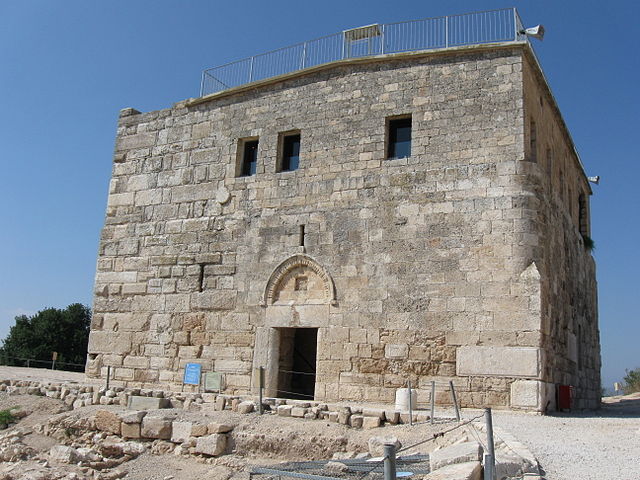Sepphoris, known in Hebrew as Tzipori and in Arabic as Saffuriya is an archaeological site located in the central Galilee region of Israel, 6 kilometres (3.7 mi) north-northwest of Nazareth. It lies 286 meters (938 ft) above sea level and overlooks the Beit Netofa Valley. The site holds a rich and diverse historical and architectural legacy that includes Hellenistic, ancient Jewish, Roman, Byzantine, early Islamic, Crusader, Mamluk and Ottoman remains. In the Roman period, it was also called Diocaesaraea. In Mandatory Palestine, Saffuriya was a Palestinian Arab town with a population of approximately 5000 people at the time of its depopulation in 1948.
Sepphoris
Aerial view of Sepphoris, 2013
Remains of Crusader/Ottoman tower in Sepphoris, 1875. Note doorway rebuilt under Zahir al-Umar.
The same Crusader/Ottoman tower after rebuilding. The upper part was used as a school from the early 1900s until 1948.
Galilee is a region located in northern Israel and southern Lebanon. Galilee traditionally refers to the mountainous part, divided into Upper Galilee and Lower Galilee.
An orchard in Upper Galilee
Keshet Cave (Rainbow Cave or Cave of the Arch), a natural arch on the ridge north of Nahal Betzet, Galilee
The hill where ancient Yodfat stood
As a Roman client ruler, Herod Antipas, the tetrarch of Galilee from 4 BCE–39 CE, was permitted to mint his own coinage (shown above).








